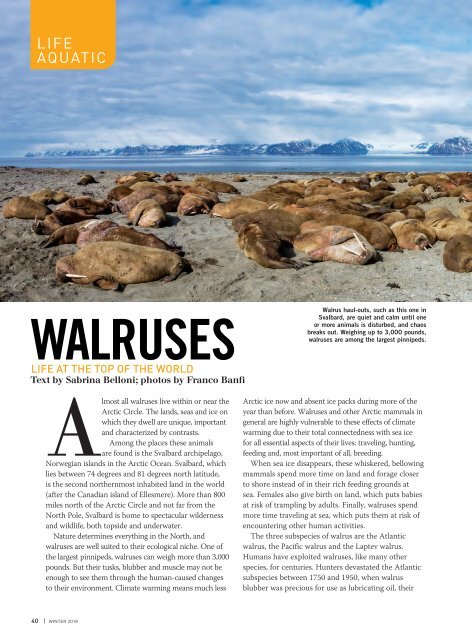AD 2018 Q1
Alert Diver is the dive industry’s leading publication. Featuring DAN’s core content of dive safety, research, education and medical information, each issue is a must-read reference, archived and shared by passionate scuba enthusiasts. In addition, Alert Diver showcases fascinating dive destinations and marine environmental topics through images from the world’s greatest underwater photographers and stories from the most experienced and eloquent dive journalists in the business.
Alert Diver is the dive industry’s leading publication. Featuring DAN’s core content of dive safety, research, education and medical information, each issue is a must-read reference, archived and shared by passionate scuba enthusiasts. In addition, Alert Diver showcases fascinating dive destinations and marine environmental topics through images from the world’s greatest underwater photographers and stories from the most experienced and eloquent dive journalists in the business.
You also want an ePaper? Increase the reach of your titles
YUMPU automatically turns print PDFs into web optimized ePapers that Google loves.
LIFE<br />
AQUATIC<br />
WALRUSES<br />
LIFE AT THE TOP OF THE WORLD<br />
Text by Sabrina Belloni; photos by Franco Banfi<br />
Walrus haul-outs, such as this one in<br />
Svalbard, are quiet and calm until one<br />
or more animals is disturbed, and chaos<br />
breaks out. Weighing up to 3,000 pounds,<br />
walruses are among the largest pinnipeds.<br />
Almost all walruses live within or near the<br />
Arctic Circle. The lands, seas and ice on<br />
which they dwell are unique, important<br />
and characterized by contrasts.<br />
Among the places these animals<br />
are found is the Svalbard archipelago,<br />
Norwegian islands in the Arctic Ocean. Svalbard, which<br />
lies between 74 degrees and 81 degrees north latitude,<br />
is the second northernmost inhabited land in the world<br />
(after the Canadian island of Ellesmere). More than 800<br />
miles north of the Arctic Circle and not far from the<br />
North Pole, Svalbard is home to spectacular wilderness<br />
and wildlife, both topside and underwater.<br />
Nature determines everything in the North, and<br />
walruses are well suited to their ecological niche. One of<br />
the largest pinnipeds, walruses can weigh more than 3,000<br />
pounds. But their tusks, blubber and muscle may not be<br />
enough to see them through the human-caused changes<br />
to their environment. Climate warming means much less<br />
Arctic ice now and absent ice packs during more of the<br />
year than before. Walruses and other Arctic mammals in<br />
general are highly vulnerable to these effects of climate<br />
warming due to their total connectedness with sea ice<br />
for all essential aspects of their lives: traveling, hunting,<br />
feeding and, most important of all, breeding.<br />
When sea ice disappears, these whiskered, bellowing<br />
mammals spend more time on land and forage closer<br />
to shore instead of in their rich feeding grounds at<br />
sea. Females also give birth on land, which puts babies<br />
at risk of trampling by adults. Finally, walruses spend<br />
more time traveling at sea, which puts them at risk of<br />
encountering other human activities.<br />
The three subspecies of walrus are the Atlantic<br />
walrus, the Pacific walrus and the Laptev walrus.<br />
Humans have exploited walruses, like many other<br />
species, for centuries. Hunters devastated the Atlantic<br />
subspecies between 1750 and 1950, when walrus<br />
blubber was precious for use as lubricating oil, their<br />
40 | WINTER <strong>2018</strong>









